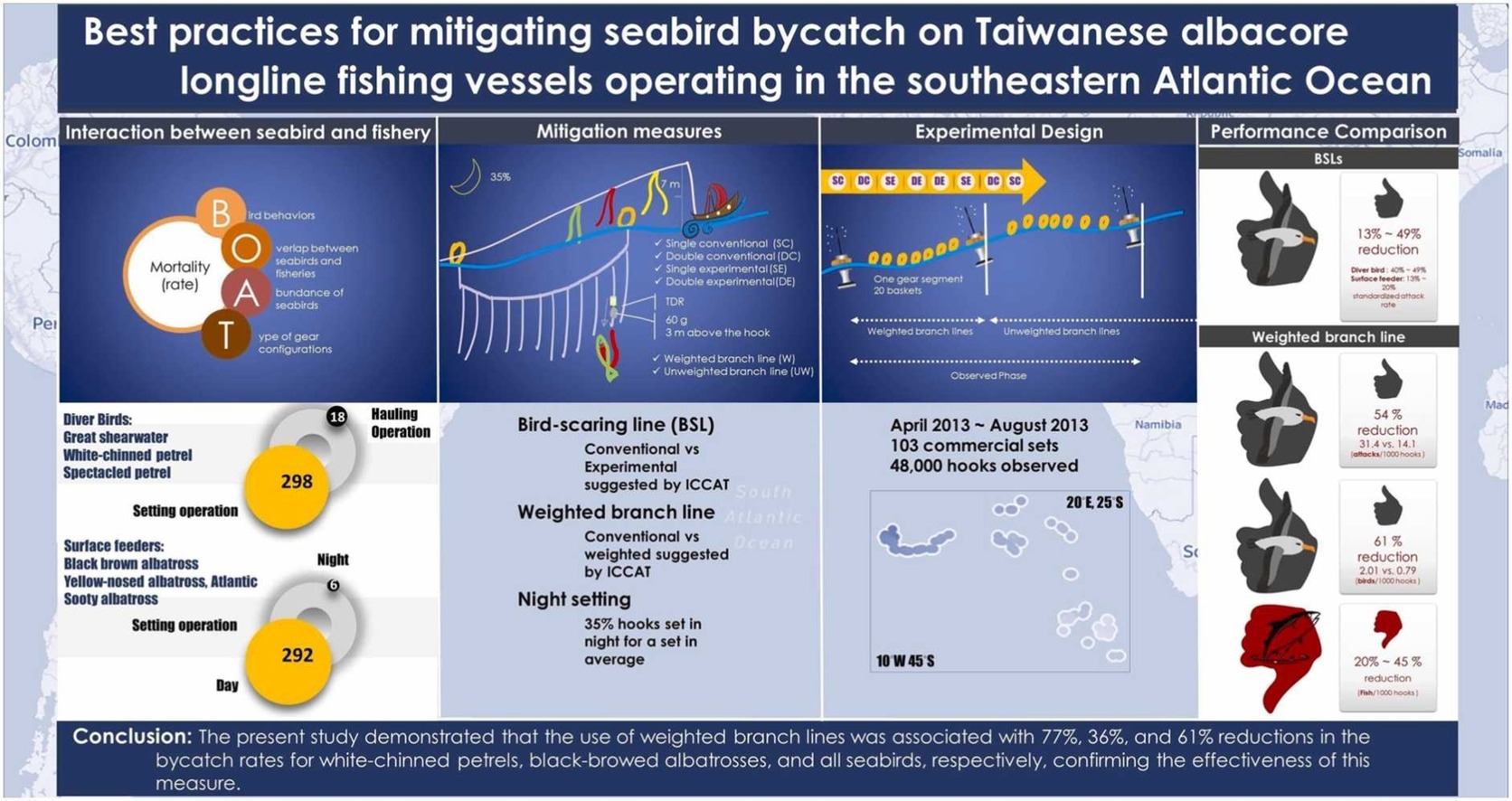 Graphical Abstract from the publication
Graphical Abstract from the publication
Hsiang-Wen Huang (Institute of Marine Affairs and Resource Management, National Taiwan Ocean University, Keelung) and colleagues have published open access in the journal Global Ecology and Conservation on testing best-practice methods for mitigating seabird bycatch. They report that on average nearly three seabirds were taken on each of 103 sets in the south-east Atlantic. Species caught included Black-browed Albatross Thalassarche melanophris, White-chinned Petrel Procellaria aequinoctialis and Great Shearwater Ardenna gravis. Night setting emerged as the most effective mitigation measure, although Whie-chinned Petrels were still caught at night.
The paper’s abstract follows:
“Seabird bycatch—particularly involving albatrosses and petrels—remains a significant conservation concern in pelagic longline fisheries. This study evaluated the effectiveness of three mitigation measures—bird-scaring lines (BSLs), weighted branch lines, and night setting—in reducing seabird bycatch in the Taiwanese albacore (Thunnus alalunga) longline fishery operating in the southeastern Atlantic Ocean. Observations were conducted aboard a commercial vessel during 103 longline sets in 2013. Four BSL treatments were tested: single and double conventional BSLs and single and double experimental BSLs recommended by the International Commission for the Conservation of Atlantic Tunas (ICCAT), each combined with either weighted (60 g at 3 m from the hook) or unweighted branch lines. A total of 298 seabirds were [sic] caught during line setting, with an additional 18 birds caught and released alive during hauling and trolling. Night setting emerged as the most effective mitigation measure, with a bycatch rate of 0.046 birds per 1000 hooks—substantially lower than the 1.101 birds per 1000 hooks recorded during daytime setting. While BSLs effectively deterred seabird attacks within their aerial extent, their efficacy declined when baited hooks remained within the diving range of seabirds beyond this zone. Weighted branch lines reduced seabird bycatch by 61 %; however, they were also associated with a potential decrease in albacore catch rates. Our findings highlight that the effectiveness of best practice mitigation—namely, the combined use of BSLs and weighted branch lines—depends on ensuring that baited hooks reach depths beyond seabird diving capabilities before exiting the aerial extent of the BSLs. Further optimization is needed to balance conservation outcomes with fishery performance.
Reference:
Huang, H.-W., Liao, H.-C., Kuo, T.-C., Chen, S.-C. & Yeh, Y.-M. 2025. Best practices for mitigating seabird bycatch on Taiwanese albacore longline fishing vessels operating in the southeastern Atlantic Ocean. Global Ecology and Conservation 62, e03752.
John Cooper, Emeritus Information Officer, Agreement on the Conservation of Albatrosses and Petrels, 04 August 2025

 English
English  Français
Français  Español
Español